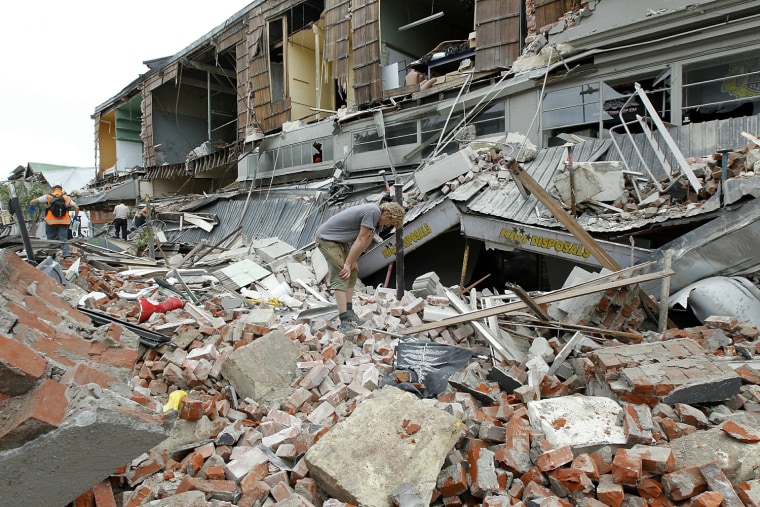A 6.3 magnitude earthquake toppled buildings, buckled streets, and killed at least 100 people in the southern New Zealand city Christchurch Tuesday – a far worse toll of death and destruction than the 7.0 earthquake that hit the same region on Sept. 4, 2010, but resulted in no loss of life.
Why?
"The main reason is that this earthquake is basically under Christchurch whereas the one in September was approximately 30 miles away," Don Blakeman, a geophysicist with the U.S. Geological Survey's National Earthquake Information Center in Golden, Colo., told me.
Although 30 miles doesn’t seem all that far, he said the distance appears to have made all the difference. Another factor could be the shaking characteristics of the quake — this one may have had higher frequency waves, which cause more damage, but that's not known at this point.
Aftershocks
Tuesday's event was likely an aftershock from the September event and is consistent with a migration pattern of aftershocks away from the epicenter of a major quake, according to Thomas Jordan, director of the Southern California Earthquake Center at the University of Southern California.
"What we are seeing now is that the aftershock activity has moved to the eastern side of that fault zone and that's not untypical. Sequences of earthquakes will propagate along a fault structure," he told me.
Although it was an aftershock, it was a large aftershock, he noted.
"Most aftershocks are typically small and they themselves don't generate many aftershocks, but occasionally, and as far as we can tell randomly, one of those will turn out to be a big earthquake itself and then it will have an aftershock sequence," he said.
Tens of aftershocks have already been felt in Christchurch since the 6.3 earthquake on Tuesday, according to news accounts.
Reports indicating that a contributor to Tuesday's death toll was the timing of the earthquake (it happened in the middle of the day when people were out and about, whereas the September quake was in the middle of the night when people were at home in bed) are misguided, Blakeman said.
"This is a very general thing, but there tend to be more injuries when people are at home in the evenings, especially at night, just because they are all in buildings," he explained.
Earthquake infrastructure
As bad as the toll from this earthquake in New Zealand, it won't be as devastating as the shallow, 7.0 earthquake that struck essentially beneath Port au Prince, Haiti, in January last year. That's mainly because Christchurch is built to withstand temblors.
"In Haiti, a lot of the structures are very, very poor," Blakeman said. Poor construction with an earthquake centered on the city was a recipe for disaster. Of course, the Haiti earthquake was also much larger — 7.0 versus 6.3.
One of the reasons Christchurch's infrastructure is built to withstand earthquakes is because New Zealand, like Southern California, is bracing for even bigger earthquakes in the future.
One of New Zealand's major fault systems, the Alpine Fault system, is analogous to the San Andreas Fault in California, noted Jordan, in that it has primarily strike-slip motion on it and is expected to rupture sometime in the future with a large earthquake.
"New Zealand has another aspect to it: it is also being squeezed, especially to the north but even in this region one can see the effects of that kind of compression from the plate tectonic motions that are occurring in the area," Jordan added. "That gives rise to subsidiary faulting such as you are seeing here."
John Roach is a contributing writer for msnbc.com. Connect with the Cosmic Log community by hitting the "like" button on the Cosmic Log Facebook page or following msnbc.com's science editor, Alan Boyle, on Twitter (@b0yle).
